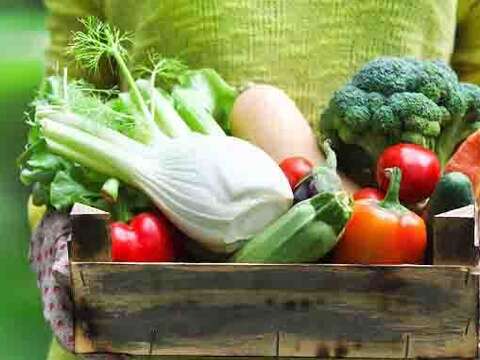Post date:2016-07-11
Updates:2016-08-23
1522
Article _ Chen Wanjing
Photos _ Incredible Edible Todmorden Community Development Team, Eigenes Werk, Reuters, Energy Globe Foundation (EGF)
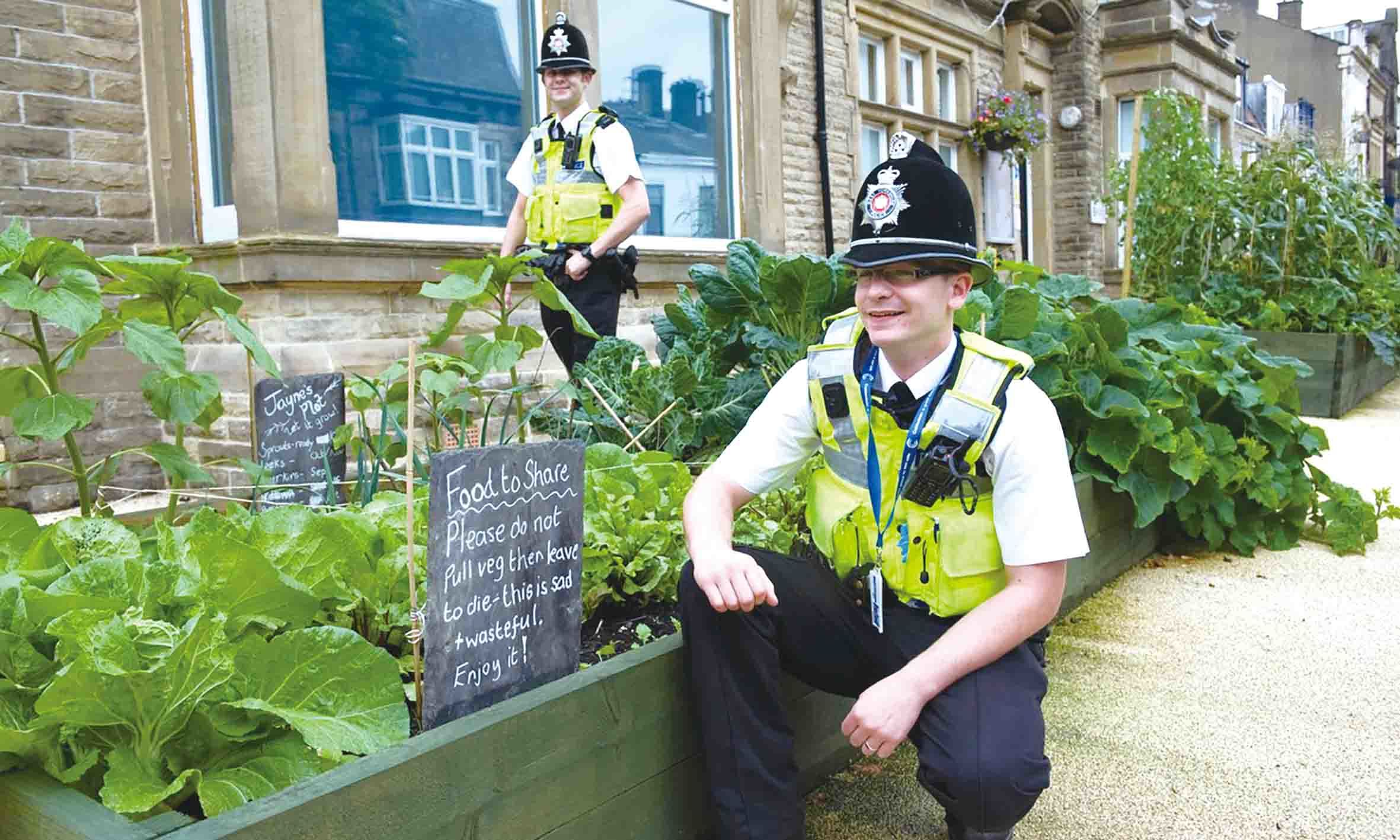
1. Todmorden is a small “edible” town in the north of England. (Photo: Incredible Edible Todmorden Community Development Team)
It is believed that Albert Einstein once said, “If the bee disappears from the surface of the Earth, man would have no more than four years to live.” This is because many fruits and vegetables rely on pollination by bees for their survival. The extinction of the bee would spell disaster for humans. As such, numerous large cities have, one after the other, launched bee-protection initiatives.
From the Ginza Shopping District in Tokyo to the National Assembly in Paris and to the rooftop of the Berlin Cathedral, bees have been welcomed. Oslo, the capital of Norway, has even gone so far as to establish the world’s first “bee highway” to protect bees. Along this route, potted plants have been placed on the rooftops or balconies of homes every 250 meters, to ensure that urban bees have plentiful food.
In the face of honeybee Colony Collapse Disorder (CCD), the United States has earmarked US$34 million to implement policies designed to save the bees. Early on, in 2009, not long after taking up residence in the White House, First Lady Michelle Obama began raising bees and growing organic fruits and vegetables. After a visit there, Akie Abe, the wife of the Japanese Prime Minister, set up a beehive in the First Couple’s o_cial residence, becoming an urban beekeeper.
In response to this global urban- farming fever, Taipei Mayor Wen-je Ko (台北市長柯文哲) has made great effort to promote a garden city policy. In 2015, the Community Agriculture Promotion Center (田園城市社區園圃推廣中心) was established, enabling civic groups to adopt agricultural space and to work together to cultivate an edible landscape and create a green, healthy garden city. A revolution in which farms are the catalyst for urban renewal is underway.
After more than a year of promotion, 19 plots of farmland have been registered and opened to the public for adoption. There are already 270 small campus gardens, civic farm and gardens, and public-building rooftop gardens.
In New York, London, Berlin, Tokyo, and Seoul, it is easy to see residents wielding hoes and engaged in farming in the midst of the cement jungle. Cities that concurrently promote food and ecological sustainability are sharing in a joint global trend. To develop stronger policies and programs, Taipei City will continue to draw from international experience to create a unique urban-agriculture model.
London Farms Dispel the City’s Cold, Damp Image
The concept of urban agriculture can be traced back to 1898, to a manuscript entitled Garden Cities of To-Morrow, written by British social reformer Ebenezer Howard. He attempted to integrate the advantages of cities and rural villages to create a utopia. Following the passage of more than a century, as part of its bid to host the 2012 Olympic Games, in 2009 London began testing its Capital Growth scheme. Seeking to cover the entire city in green spaces, the ideas of this pioneer were carried forward and developed.
London’s city government launched the slogan “Get your hands dirty” to encourage Londoners to cultivate land within the city limits. Application for funding to establish a community garden could be made by individuals possessing the rights to use of land measuring at least five square meters in area, and tended to by at least five persons. Although the curtain came down on the London Olympic Games long ago, this scheme has been continued, and to date more than 2,500 community gardens have been set up. Even the long-neglected tunnels of the London Underground have been transformed into greenhouses for the growing of organic vegetables, dispelling this financial capital’s image as clammy and rigid.
In the north of England is a small “edible” town named Todmorden. Community gardening has been promoted here since 2008, with idle spaces given over to the cultivation of fruits and vegetables. Moreover, this town has designed a greenbelt in which people can pick the fruits and vegetables they need free of charge. This has not only served to beautify the town, but has also made it one of the few self-sufficient agricultural communities in England. In addition, it has brought a continuous stream of fresh-food enthusiasts, resulting in renewed prosperity for this once-declining community.
Berlin’s Urban Oasis
Among European countries, Germany has the most thriving urban agriculture. Early on, in 1919, it established regulations for urban farms and gardens. During World War II, the country suffered numerous air raids, and Germans depended on urban farms and gardens to feed themselves. Today, this practice has been transformed into farm experiential and recreational opportunities. Using the German experience as reference, in 1990 Taipei City set up its first community garden in Beitou, establishing a new model for urban agriculture in Taiwan.
After the Berlin Wall was torn down, the area around it remained a wasteland. In the summer of 2009, the nonprofit organization Nomadic Green initiated an experiment. It transformed this wasteland into an urban farm, naming it Prinzessinnengarten (Princess Gardens). Anyone can engage in cultivation in this open space. Under the concept of “unity is strength,” every year about 500 types of fruits and vegetables are produced on this farmland. It is as if this is an oasis in the middle of an urban setting.
In addition to vegetable gardens, the Princess Gardens has a flea market, beekeeping classroom, activity center, and other facilities. Of course, there is also a restaurant which serves salads and vanilla tea created with ingredients picked from the gardens. Today, the Princess Gardens is a favorite recreational destination for local citizens. This impoverished old community has been injected with new life. Other communities have followed suit, and there are currently about 150 urban farms throughout Germany being operated on a model similar to that of the Princess Gardens.
New York – Home to World’s Largest Rooftop Farm
In the world’s capital, New York, land is at a premium. Concealed in its most populous borough, Brooklyn, is the Brooklyn Grange, the world’s largest rooftop farm. In 2010, a group of young people suddenly came up with an unusual idea – to develop a farm on the roof of a nearly century-old warehouse. They brought in soil from Pennsylvania, and made use of discarded sawdust and kitchen scraps to create organic compost, to grow organic fruits and vegetables. In 2012, they followed up with the establishment of a second rooftop farm. Currently, these two farms together occupy an area of 2.5 acres. Every year, they produce more than 50,000 pounds of organic fruits and vegetables.
The Brooklyn Grange is also New York’s largest bee farm, chickens are raised to produce eggs, and an aquaponics model has been incorporated in the pursuit of ecological balance. More than 40 types of agricultural crops are grown here. A diversity of services is provided, and the farm is open to visitors. Its influence has been widespread, with numerous rooftops, vacant lots, and spaces on school campuses and in public parks across New York being transformed into fertile farmland. There is currently more than 700 urban farms, creating alternative landscapes to the city’s towering skyscrapers.
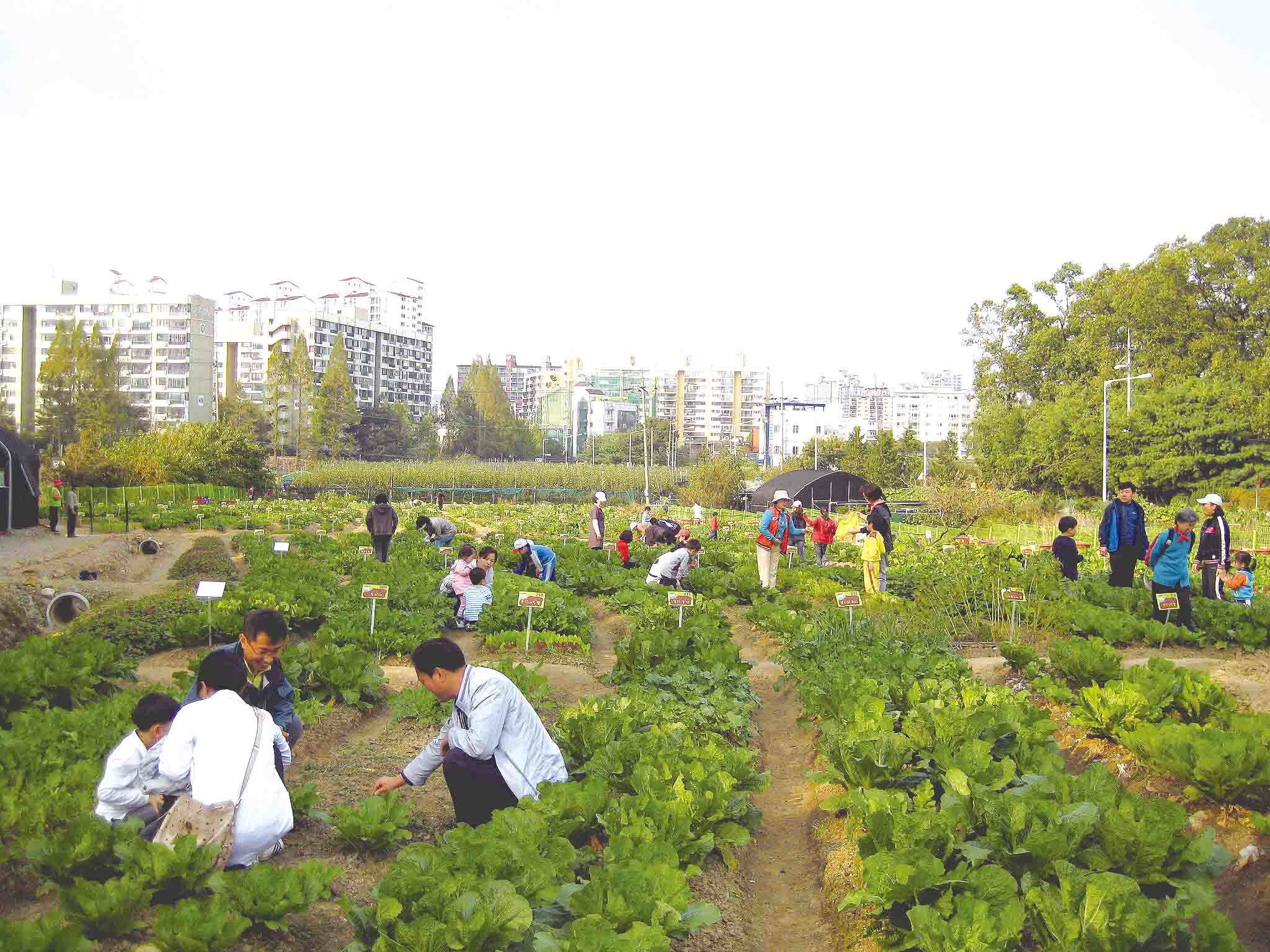
2. The city of Seoul has set a target of increasing the land area used for farming nearly fivefold by 2018. (Photo: Energy Globe Foundation)
Beekeeping in Tokyo’s Ginza District Creates Business Opportunities
Rooftop gardens and beekeeping are not only popular in Europe and North America; Asian countries are also seeking to fulfill their responsibility as global citizens. In 2006, the Japanese nonprofit Ginpachi Ginza Honey Bee Project initiated beekeeping on the rooftops of Asia’s most expensive area, the Ginza Shopping District in Tokyo. From this area, the honeybees can easily reach nearby Hibiya Park and the gardens of the Imperial Palace.
Today, the Ginpachi Ginza Honey Bee Project produces considerable amounts of honey every year. Under the inspired design of the businesses in this district, sales of this popular product are restricted during the harvesting period. The community has a common topic for dialogue because of this, and has built closer bonds. In addition, honey has not only brought business opportunities to Ginza, but also pollination, carried out during the arduous process of producing honey. As a result, trees that have not produced fruit in a long time have been given a renewed lease on life, and birds, beetles, and butterflies have congregated in this area, creating a rich ecological landscape.
A Japanese human-resources company, PASONA, in addition to maintaining a rooftop farm and bee colony, has developed an alternative type of indoor office farm. This urban farm, at PASONA’s Tokyo headquarters, occupies an area of 3,995 square meters. More than 200 types of fruits and vegetables are grown, including paddy rice, tomatoes, eggplants, and green peppers. Of course, all of these are used as ingredients in the employee cafeteria. Whether the lobby area in front of the elevators, corridors, reception area, or dining area, the presence of flowers, plants, fruits, and vegetables is felt everywhere. This is a prime model for implementation of the concept of interdependence between humans and nature.
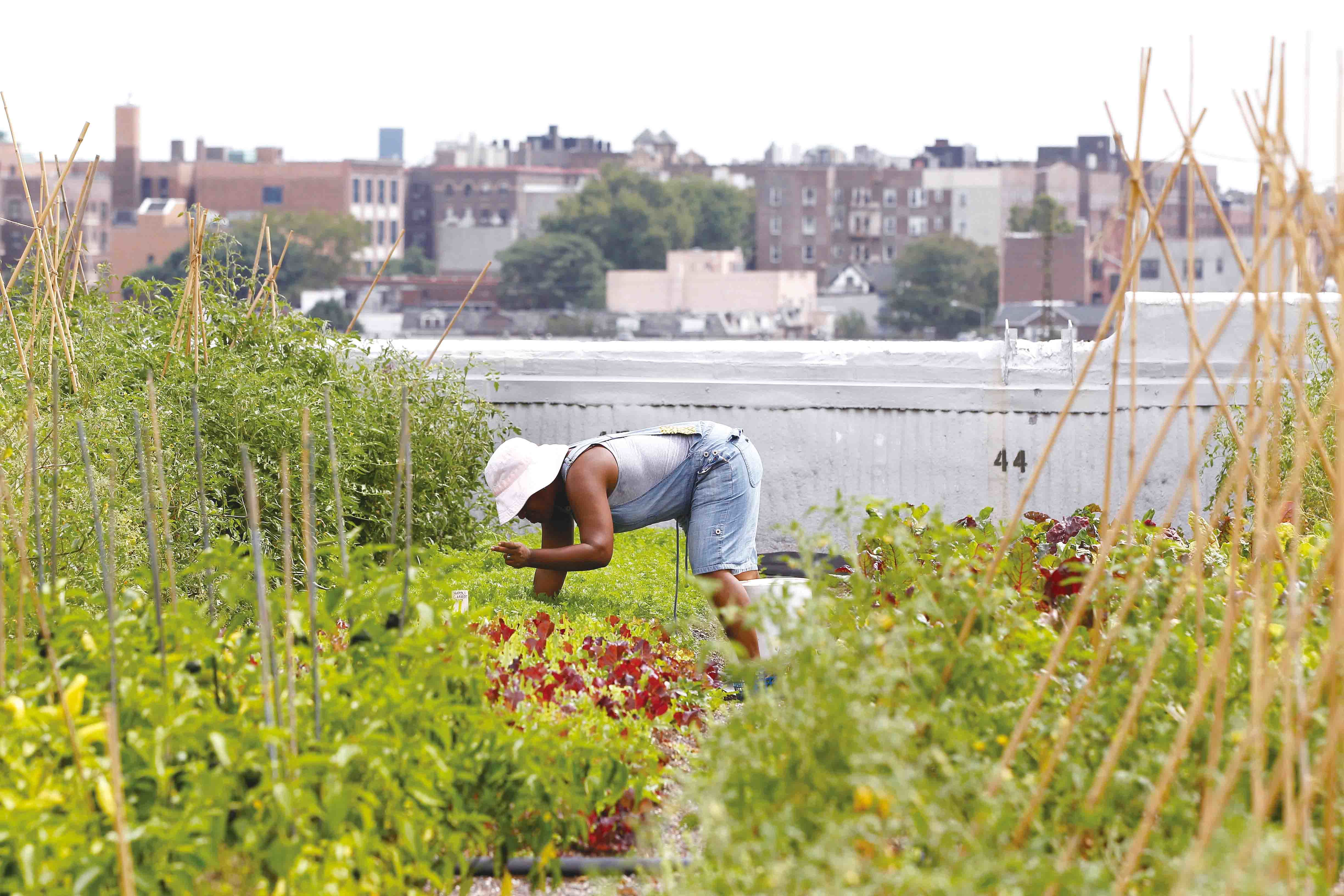
3. Beginning with the Brooklyn Grange, New York currently has more than 700 urban farms. (Photo: Reuters)
A Small Island in Seoul Is Transformed Into an Urban Farm
Under the impetus of Korea’s Seoul Green Trust, made up of government agencies and non-governmental organizations, there have been remarkable achievements in the greening of this city. In 2015, officials put forth version 2.0 of the Seoul urban agriculture policy, which calls for a nearly fivefold increase in the area of land used for cultivation by 2018, to reach the objective of 420 hectares. It is hoped that all city residents can experience the joy of farming within a 10-minute walk.
The most iconic case is that of Nodeul seom, a small island in Seoul’s Han River. It was originally planned as the site of an opera house, but was instead transformed into an urban agriculture area. Moreover, a sales and marketing center has been established for the consignment of fruits and vegetables. On the island are dome-shaped net rooms, a beekeeping area, compost area, greenhouses, and seed-storage space, encouraging city residents to participate in cultivation.
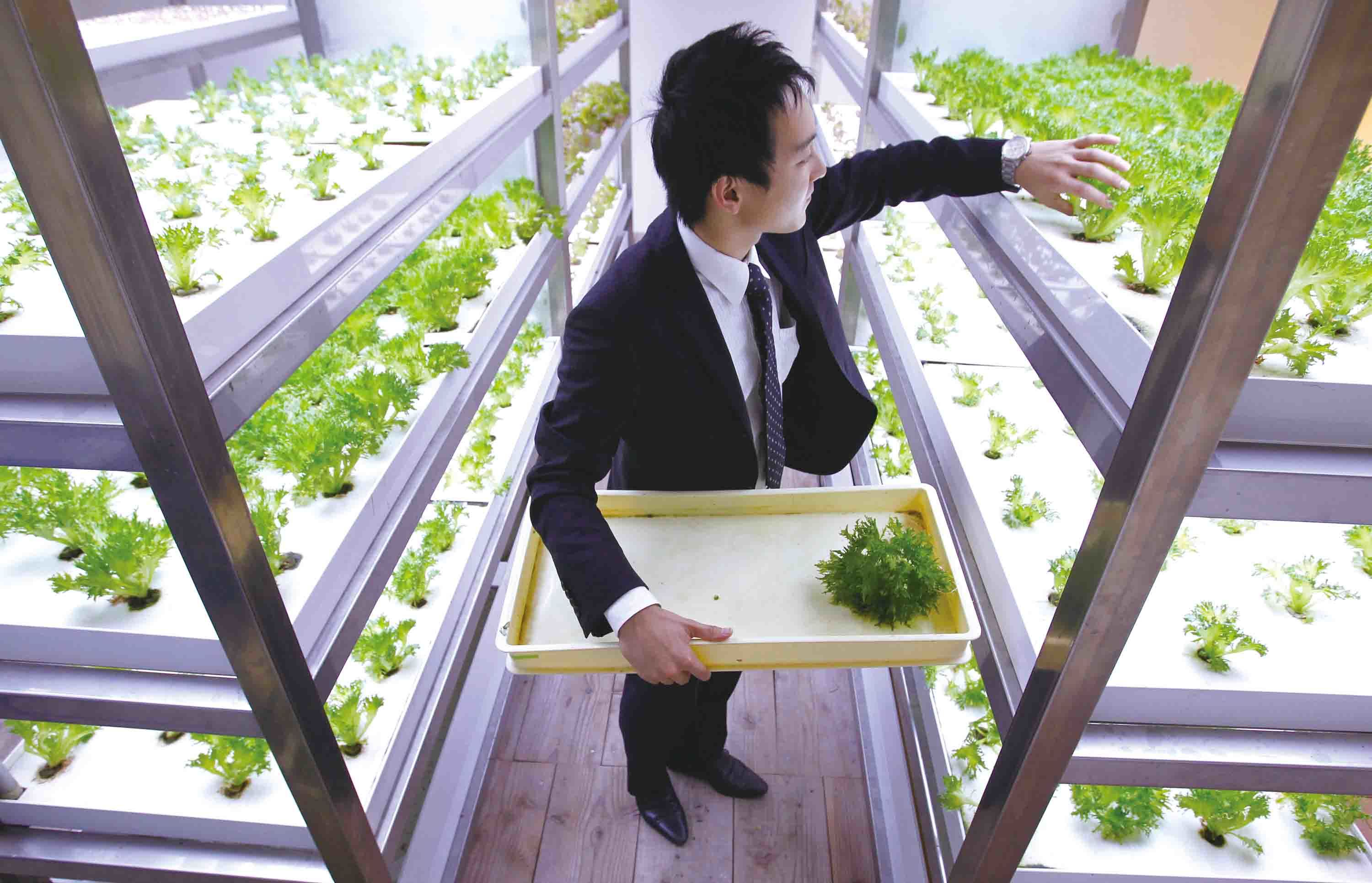
4. The Japanese human-resources firm PASONA has brought farming into an office-building setting. (Photo: Reuters)
Photos _ Incredible Edible Todmorden Community Development Team, Eigenes Werk, Reuters, Energy Globe Foundation (EGF)

1. Todmorden is a small “edible” town in the north of England. (Photo: Incredible Edible Todmorden Community Development Team)
It is believed that Albert Einstein once said, “If the bee disappears from the surface of the Earth, man would have no more than four years to live.” This is because many fruits and vegetables rely on pollination by bees for their survival. The extinction of the bee would spell disaster for humans. As such, numerous large cities have, one after the other, launched bee-protection initiatives.
From the Ginza Shopping District in Tokyo to the National Assembly in Paris and to the rooftop of the Berlin Cathedral, bees have been welcomed. Oslo, the capital of Norway, has even gone so far as to establish the world’s first “bee highway” to protect bees. Along this route, potted plants have been placed on the rooftops or balconies of homes every 250 meters, to ensure that urban bees have plentiful food.
In the face of honeybee Colony Collapse Disorder (CCD), the United States has earmarked US$34 million to implement policies designed to save the bees. Early on, in 2009, not long after taking up residence in the White House, First Lady Michelle Obama began raising bees and growing organic fruits and vegetables. After a visit there, Akie Abe, the wife of the Japanese Prime Minister, set up a beehive in the First Couple’s o_cial residence, becoming an urban beekeeper.
In response to this global urban- farming fever, Taipei Mayor Wen-je Ko (台北市長柯文哲) has made great effort to promote a garden city policy. In 2015, the Community Agriculture Promotion Center (田園城市社區園圃推廣中心) was established, enabling civic groups to adopt agricultural space and to work together to cultivate an edible landscape and create a green, healthy garden city. A revolution in which farms are the catalyst for urban renewal is underway.
After more than a year of promotion, 19 plots of farmland have been registered and opened to the public for adoption. There are already 270 small campus gardens, civic farm and gardens, and public-building rooftop gardens.
In New York, London, Berlin, Tokyo, and Seoul, it is easy to see residents wielding hoes and engaged in farming in the midst of the cement jungle. Cities that concurrently promote food and ecological sustainability are sharing in a joint global trend. To develop stronger policies and programs, Taipei City will continue to draw from international experience to create a unique urban-agriculture model.
London Farms Dispel the City’s Cold, Damp Image
The concept of urban agriculture can be traced back to 1898, to a manuscript entitled Garden Cities of To-Morrow, written by British social reformer Ebenezer Howard. He attempted to integrate the advantages of cities and rural villages to create a utopia. Following the passage of more than a century, as part of its bid to host the 2012 Olympic Games, in 2009 London began testing its Capital Growth scheme. Seeking to cover the entire city in green spaces, the ideas of this pioneer were carried forward and developed.
London’s city government launched the slogan “Get your hands dirty” to encourage Londoners to cultivate land within the city limits. Application for funding to establish a community garden could be made by individuals possessing the rights to use of land measuring at least five square meters in area, and tended to by at least five persons. Although the curtain came down on the London Olympic Games long ago, this scheme has been continued, and to date more than 2,500 community gardens have been set up. Even the long-neglected tunnels of the London Underground have been transformed into greenhouses for the growing of organic vegetables, dispelling this financial capital’s image as clammy and rigid.
In the north of England is a small “edible” town named Todmorden. Community gardening has been promoted here since 2008, with idle spaces given over to the cultivation of fruits and vegetables. Moreover, this town has designed a greenbelt in which people can pick the fruits and vegetables they need free of charge. This has not only served to beautify the town, but has also made it one of the few self-sufficient agricultural communities in England. In addition, it has brought a continuous stream of fresh-food enthusiasts, resulting in renewed prosperity for this once-declining community.
Berlin’s Urban Oasis
Among European countries, Germany has the most thriving urban agriculture. Early on, in 1919, it established regulations for urban farms and gardens. During World War II, the country suffered numerous air raids, and Germans depended on urban farms and gardens to feed themselves. Today, this practice has been transformed into farm experiential and recreational opportunities. Using the German experience as reference, in 1990 Taipei City set up its first community garden in Beitou, establishing a new model for urban agriculture in Taiwan.
After the Berlin Wall was torn down, the area around it remained a wasteland. In the summer of 2009, the nonprofit organization Nomadic Green initiated an experiment. It transformed this wasteland into an urban farm, naming it Prinzessinnengarten (Princess Gardens). Anyone can engage in cultivation in this open space. Under the concept of “unity is strength,” every year about 500 types of fruits and vegetables are produced on this farmland. It is as if this is an oasis in the middle of an urban setting.
In addition to vegetable gardens, the Princess Gardens has a flea market, beekeeping classroom, activity center, and other facilities. Of course, there is also a restaurant which serves salads and vanilla tea created with ingredients picked from the gardens. Today, the Princess Gardens is a favorite recreational destination for local citizens. This impoverished old community has been injected with new life. Other communities have followed suit, and there are currently about 150 urban farms throughout Germany being operated on a model similar to that of the Princess Gardens.
New York – Home to World’s Largest Rooftop Farm
In the world’s capital, New York, land is at a premium. Concealed in its most populous borough, Brooklyn, is the Brooklyn Grange, the world’s largest rooftop farm. In 2010, a group of young people suddenly came up with an unusual idea – to develop a farm on the roof of a nearly century-old warehouse. They brought in soil from Pennsylvania, and made use of discarded sawdust and kitchen scraps to create organic compost, to grow organic fruits and vegetables. In 2012, they followed up with the establishment of a second rooftop farm. Currently, these two farms together occupy an area of 2.5 acres. Every year, they produce more than 50,000 pounds of organic fruits and vegetables.
The Brooklyn Grange is also New York’s largest bee farm, chickens are raised to produce eggs, and an aquaponics model has been incorporated in the pursuit of ecological balance. More than 40 types of agricultural crops are grown here. A diversity of services is provided, and the farm is open to visitors. Its influence has been widespread, with numerous rooftops, vacant lots, and spaces on school campuses and in public parks across New York being transformed into fertile farmland. There is currently more than 700 urban farms, creating alternative landscapes to the city’s towering skyscrapers.

2. The city of Seoul has set a target of increasing the land area used for farming nearly fivefold by 2018. (Photo: Energy Globe Foundation)
Beekeeping in Tokyo’s Ginza District Creates Business Opportunities
Rooftop gardens and beekeeping are not only popular in Europe and North America; Asian countries are also seeking to fulfill their responsibility as global citizens. In 2006, the Japanese nonprofit Ginpachi Ginza Honey Bee Project initiated beekeeping on the rooftops of Asia’s most expensive area, the Ginza Shopping District in Tokyo. From this area, the honeybees can easily reach nearby Hibiya Park and the gardens of the Imperial Palace.
Today, the Ginpachi Ginza Honey Bee Project produces considerable amounts of honey every year. Under the inspired design of the businesses in this district, sales of this popular product are restricted during the harvesting period. The community has a common topic for dialogue because of this, and has built closer bonds. In addition, honey has not only brought business opportunities to Ginza, but also pollination, carried out during the arduous process of producing honey. As a result, trees that have not produced fruit in a long time have been given a renewed lease on life, and birds, beetles, and butterflies have congregated in this area, creating a rich ecological landscape.
A Japanese human-resources company, PASONA, in addition to maintaining a rooftop farm and bee colony, has developed an alternative type of indoor office farm. This urban farm, at PASONA’s Tokyo headquarters, occupies an area of 3,995 square meters. More than 200 types of fruits and vegetables are grown, including paddy rice, tomatoes, eggplants, and green peppers. Of course, all of these are used as ingredients in the employee cafeteria. Whether the lobby area in front of the elevators, corridors, reception area, or dining area, the presence of flowers, plants, fruits, and vegetables is felt everywhere. This is a prime model for implementation of the concept of interdependence between humans and nature.

3. Beginning with the Brooklyn Grange, New York currently has more than 700 urban farms. (Photo: Reuters)
A Small Island in Seoul Is Transformed Into an Urban Farm
Under the impetus of Korea’s Seoul Green Trust, made up of government agencies and non-governmental organizations, there have been remarkable achievements in the greening of this city. In 2015, officials put forth version 2.0 of the Seoul urban agriculture policy, which calls for a nearly fivefold increase in the area of land used for cultivation by 2018, to reach the objective of 420 hectares. It is hoped that all city residents can experience the joy of farming within a 10-minute walk.
The most iconic case is that of Nodeul seom, a small island in Seoul’s Han River. It was originally planned as the site of an opera house, but was instead transformed into an urban agriculture area. Moreover, a sales and marketing center has been established for the consignment of fruits and vegetables. On the island are dome-shaped net rooms, a beekeeping area, compost area, greenhouses, and seed-storage space, encouraging city residents to participate in cultivation.

4. The Japanese human-resources firm PASONA has brought farming into an office-building setting. (Photo: Reuters)
 TAIPEI 2016Summer Vol.04—Eat Homegrown Foods The Global Popularity of Urban Farming
TAIPEI 2016Summer Vol.04—Eat Homegrown Foods The Global Popularity of Urban Farming